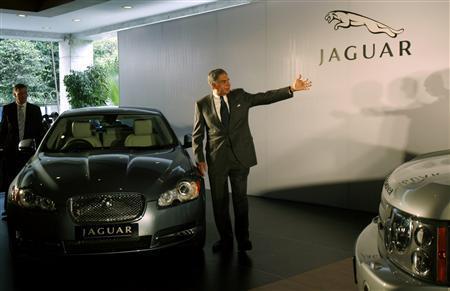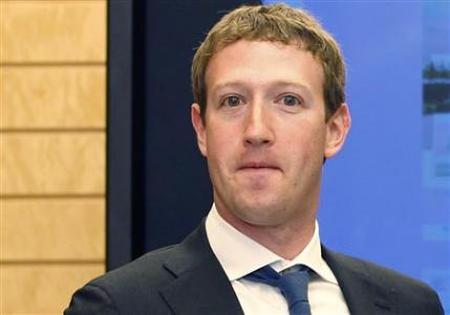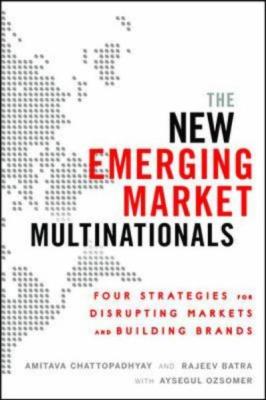
Winning global markets is not about acquiring or developing technology but about developing solutions for target consumers, Amitava Chattopadhyay, the INSEAD Chaired Professor of Marketing and Innovation, tells Alokananda Chakraborty.
Your book is also about 'Strategies for Disrupting Markets'. Why the accent on disruption? Would you say the whole debate about 'disruption' and 'disruptive strategies' is kind of over-hyped?
I think the use of the term disruption is accurate in our instance. In the course of the last fifty years it has been the multinationals from the developed world that have held sway in the global markets.
Suddenly, in the course of the last decade, a slate of companies from the emerging markets are establishing significant branded businesses globally, upsetting a global order that has held sway during my life time.
Who would have considered Tata Global Beverages to be the second largest player globally in the tea business even 15 years ago? Could anyone, likewise, have imagined a Chinese company holding the number 2 position in the PC business even a decade ago? Yet Lenovo today is doing just that.
Samsung and HTC hold the top spots along with Apple in the smartphone business. LG is the number one player in the US in white goods. Haier is a leader in air conditioners worldwide. And the story goes on. I think this is disruption.
Is there a common thread that can explain the success of the new multinationals you have described in your book and how serious a threat are they to dominant multinationals in the West?
Yes, indeed one can. The book is about the common thread. First, there is a mindset change among these players. MNCs from the emerging markets (EMNCs) today have the confidence and the capability to build global branded businesses.
Second, they are focused narrowly. Mahindra and Mahindra focuses on UVs and SUVs; Marico focuses on pre and post hair care, Godrej Consumer Products Limited focuses on consumers with black hair, eschewing blondes and red heads, and focus on the geographies of South Asia, Africa, and the West Asia.
Third, they focus on the consumer. Thus, Mahindra and Mahindra started with what the consumer wanted in terms of the cabin interior when designing the Xylo, designing the care inside out, if you will, resulting in great success.
Marico saw the need for hair care products that were free from alcohol for targeting Muslim consumers and have built up a strong presence in the West Asia by marketing a hair gel formulated without alcohol.
Fourth, they are innovative both in terms of product and process innovation. I have given you the example of product innovation above in terms of the Marico example, but process innovation is no less important.
Indeed, the entire success of the Indian IT industry led by Infosys, TCS, and Wipro rests on the process innovation that has been labelled the global delivery model (GDM). Such innovations not only improve efficiency but also reduce costs, as in the case of the GDM.
...

We are hearing a lot about the 'new' challenges in marketing in the digital world. What are these new challenges? What is so 'new' about them?
Digital technology has flattened the world, so to speak, creating opportunities for emerging market firms. In a digital world, information is both easier to obtain and disseminate.
This, on the one hand, erodes some of the advantages enjoyed by the incumbent multinationals in terms of information.
On the other, being a new platform, all competitors are trying to figure their way out on these platforms, again putting emerging market firms on a similar level as established multinationals.
What is the most valuable asset that these companies have and how sustainable are their strategies?
Focused, frugal innovation is the most valuable asset to exploit going forward and if done appropriately the strategies they drive will be sustainable.
What are the main reasons that drive the increasing interest in taking brands global? What kind of uncertainties that brands with global ambitions expose themselves to?
Taking a brand global makes sense because brands are extremely expensive to build and nurture. Moreover, research shows that global brands have cache in the minds of consumers.
The danger, of course, is losing sight of the delicate balance between being global while, at the same time, meeting local needs. Frugal innovation is one advantage of EMNCs that helps them potentially achieve a better balance on this front.
A brand's relationship to its country of origin creates certain very recognisable associations. What sort of impact do such associations have on the brand's prospects in new markets?
Clearly the COO affects a brand. This is one area where EMNC brands can be vulnerable. One way around this, of course, is acquiring global brands and keeping the association with the parent relatively loose.
Cases in point would be the acquisition of Jaguar and Land Rover by Tata Motors or the acquisition of Tetley by the then Tata Tea. These acquisitions have been highly successful notwithstanding the early criticisms leveled against them.
Indeed, the Tetley acquisition has been transformative for Tata Tea, which has moved from being an agricultural company leveraging its own tea gardens to a global beverage player which no longer owns any tea gardens.
...

As a researcher, you have the vantage point of working with different marketing departments. What makes some companies more successful in adopting new technology than others?
It is about assessing new technologies and opportunities from the vantage point of their target consumers. It is not about acquiring or developing technology but about developing solutions for target consumers.
Firms which select technologies based on their understanding of target consumer pain points are the ones which succeed since the technologies the develop and deploy benefit the target consumer.
While doing your research for the book what are some of the hurdles that you saw these companies face when undertaking a merger or an acquisition in a multicultural setting?
The key hurdle is the integration of the acquisitions. We devote an entire chapter of the book to the topic of acquisition. What is interesting is that there is much to be learned here from the "soft touch" acquisition integration of the Indian EMNCs.
This "soft touch" has not only helped them to successfully integrate their acquisitions, but as one of the firms told us, has made them the acquirer of choice.
CEOs suggest that when you get to a certain size, it's tougher to maintain that entrepreneurial feel and a culture of innovation. In a recent interview, Mark Zuckerberg made a point of explaining how he is trying to stay small while getting big. What does your research suggest?
Clearly, with increasing size it is more challenging to remain entrepreneurial. Breaking the organisation down into business units focused around specific consumers or consumer needs helps keep the units smaller and more entrepreneurial.
Then, it is about inculcating and rewarding an innovation mindset. Company leadership often worries about the structures, tools and processes of innovation, but lose sight of the fact that leadership needs to themselves have an innovation mindset and build a culture of innovation within the organisation.
Creating this company-wide mindset, supported by appropriate systems and processes, is the key.
...

What differences, if any, have emerged in business practices between the emerging multinationals and the incumbent multinationals, if I may use the term? Any surprises? If you could give 30 seconds of wisdom on marketing innovation to the CMO of a Fortune 500 company, what would you say?
Genuinely focus on the target customer. Try to understand what they really want. Then provide those products and services that you can provide better than your competitors, to meet the identified customer needs.
Today, many companies have lost sight of this simple truth. Rather, they try to find ways of selling products and services they have developed, which may or may not be what the target consumers want.
Your book is targeted primarily for leaders at multinationals in the developed markets. What is your advice to companies in the emerging markets?
The book is targeted at three audiences. First, at aspiring emerging market multinationals. What can they learn from the companies that have blazed a path forward that can help them follow in their footsteps.
Second, it is targeted at challenger businesses everywhere. Thus, a company like Clorox, a single digit billion dollar company that competes with a gorilla like Procter and Gamble faces many of the same challenges as the EMNCs. Thus they too can learn from the experience of the EMNCs that we synthesise in our book.
Finally, developed world multinationals can benefit by understanding the strategies of the EMNCs as only by understanding them can then develop appropriate and adequate competitive responses.